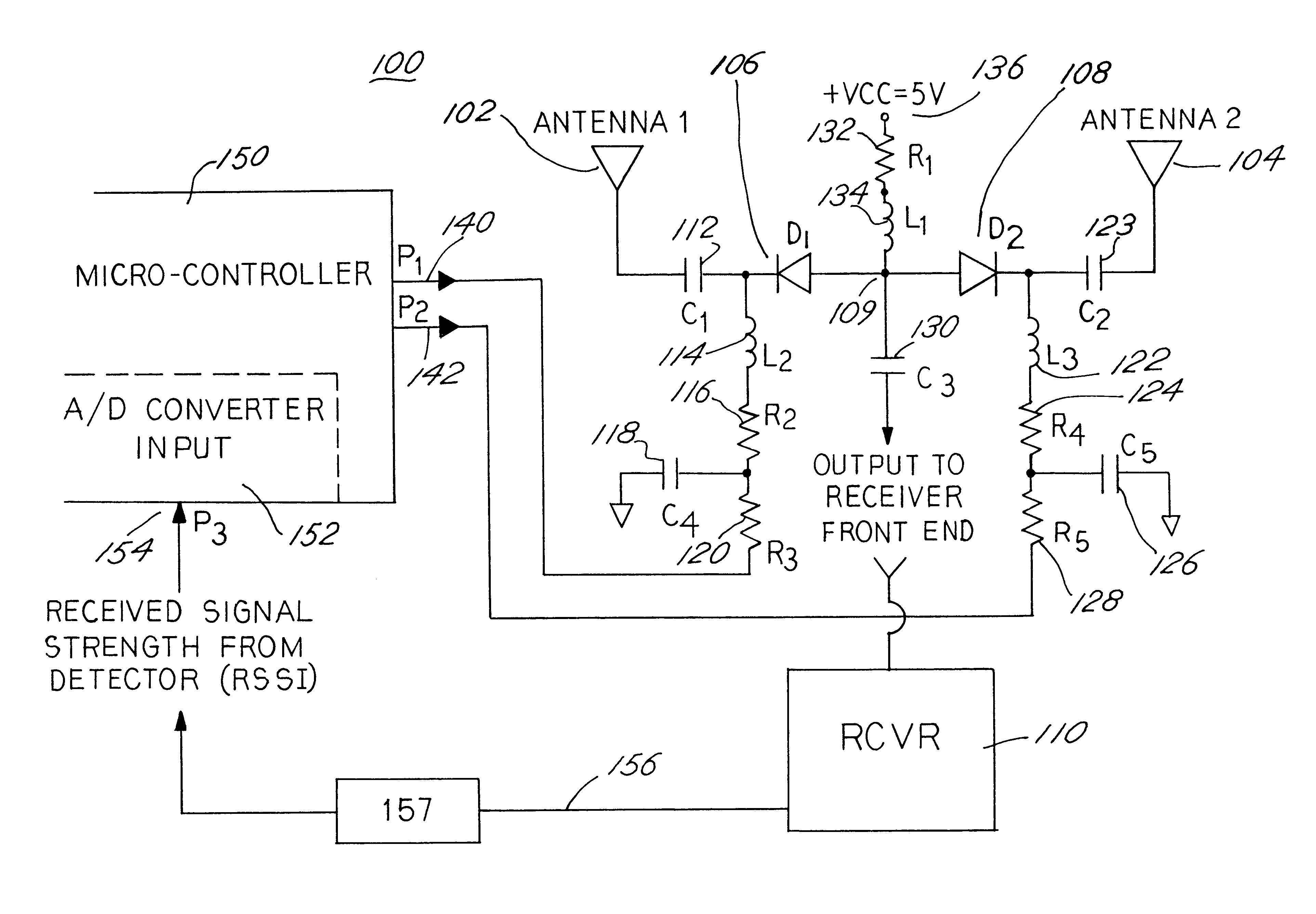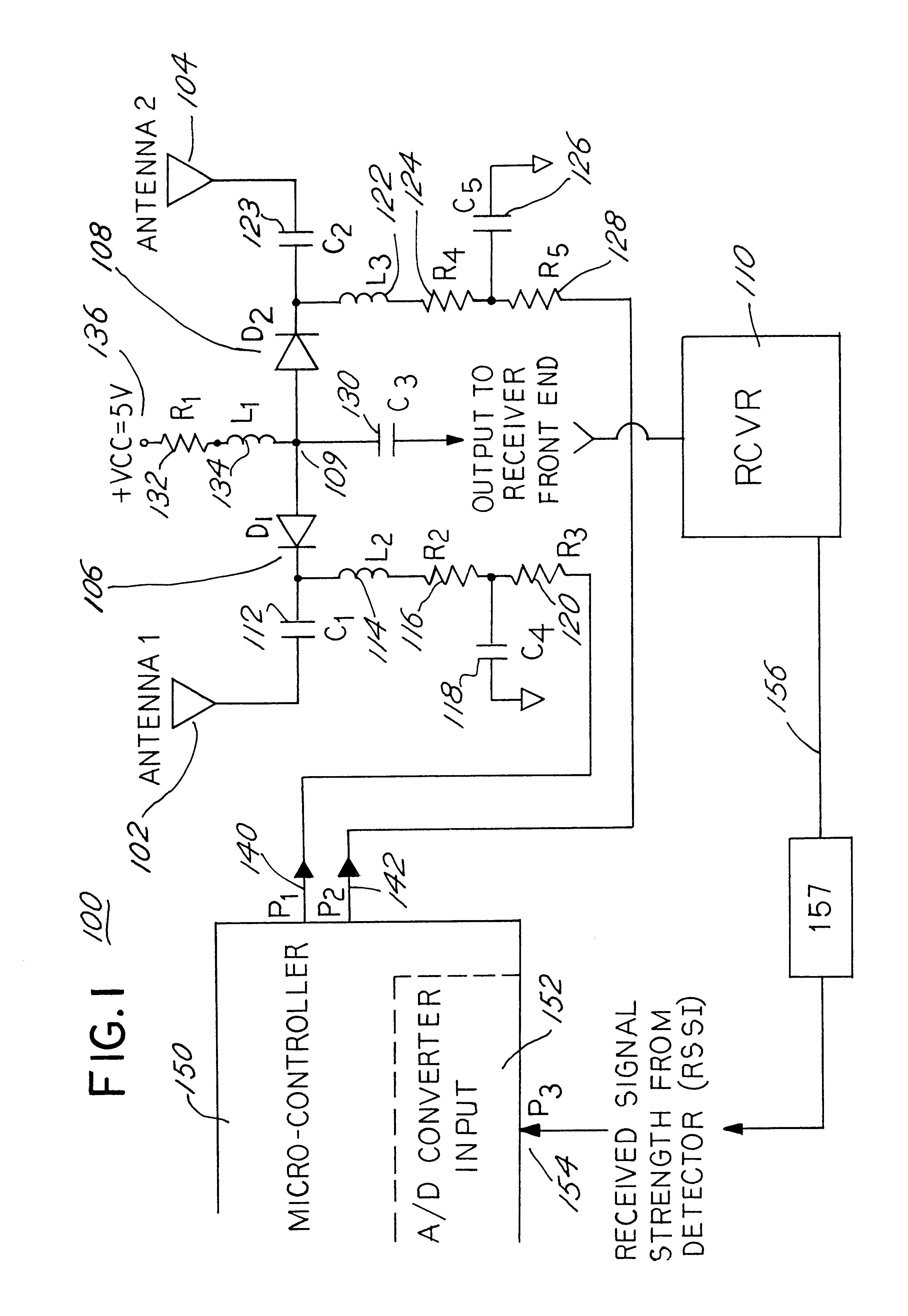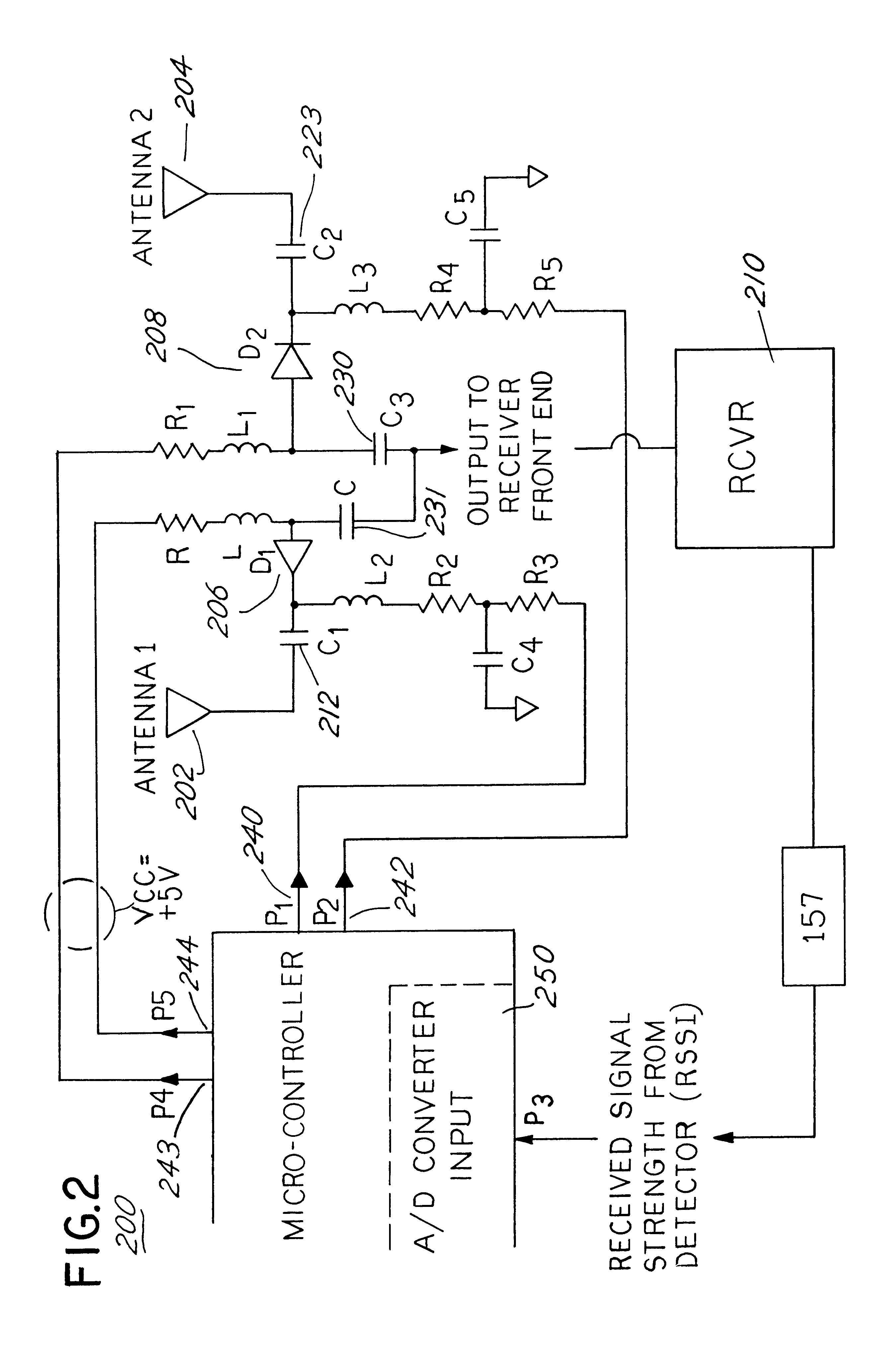Method and apparatus for predictably switching diversity antennas on signal dropout
a diversity antenna and signal dropout technology, applied in the field of can solve the problems of incomplete audio loss, complex prior art diversity antenna switching systems, and inability to predictably switch diversity antennas, so as to reduce the attenuation of rf signals, and avoid the effect of audio output noise spikes
- Summary
- Abstract
- Description
- Claims
- Application Information
AI Technical Summary
Benefits of technology
Problems solved by technology
Method used
Image
Examples
Embodiment Construction
FIG. 1 shows a schematic diagram of the preferred embodiment of diversity receiving apparatus for coupling radio frequency signals from at least one antenna of a pair of such antennas into a radio receiver for demodulation. The diversity receiving apparatus 100 is comprised two radio antennas 102 and 104 for detecting signals radiated from a transmitter not shown. While the antennas 102 and 104 are only shown schematically in FIG. 1, for improving signal reception, the actual antennas are preferably spaced as far apart as practical.
The first antenna 102 is capacitively coupled 112 to the cathode of a first PIN diode 106. The anode of the first PIN diode 106 is connected to a summing node 109 that is capacitively coupled 130 to the input of a radio frequency receiver 110 which demodulates radio frequency signals picked up at antenna 102 and outputs an audio frequency signal. The second antenna 104 is also capacitively coupled 123 to the cathode of a second PIN diode 108, the anode of...
PUM
 Login to View More
Login to View More Abstract
Description
Claims
Application Information
 Login to View More
Login to View More - R&D
- Intellectual Property
- Life Sciences
- Materials
- Tech Scout
- Unparalleled Data Quality
- Higher Quality Content
- 60% Fewer Hallucinations
Browse by: Latest US Patents, China's latest patents, Technical Efficacy Thesaurus, Application Domain, Technology Topic, Popular Technical Reports.
© 2025 PatSnap. All rights reserved.Legal|Privacy policy|Modern Slavery Act Transparency Statement|Sitemap|About US| Contact US: help@patsnap.com



